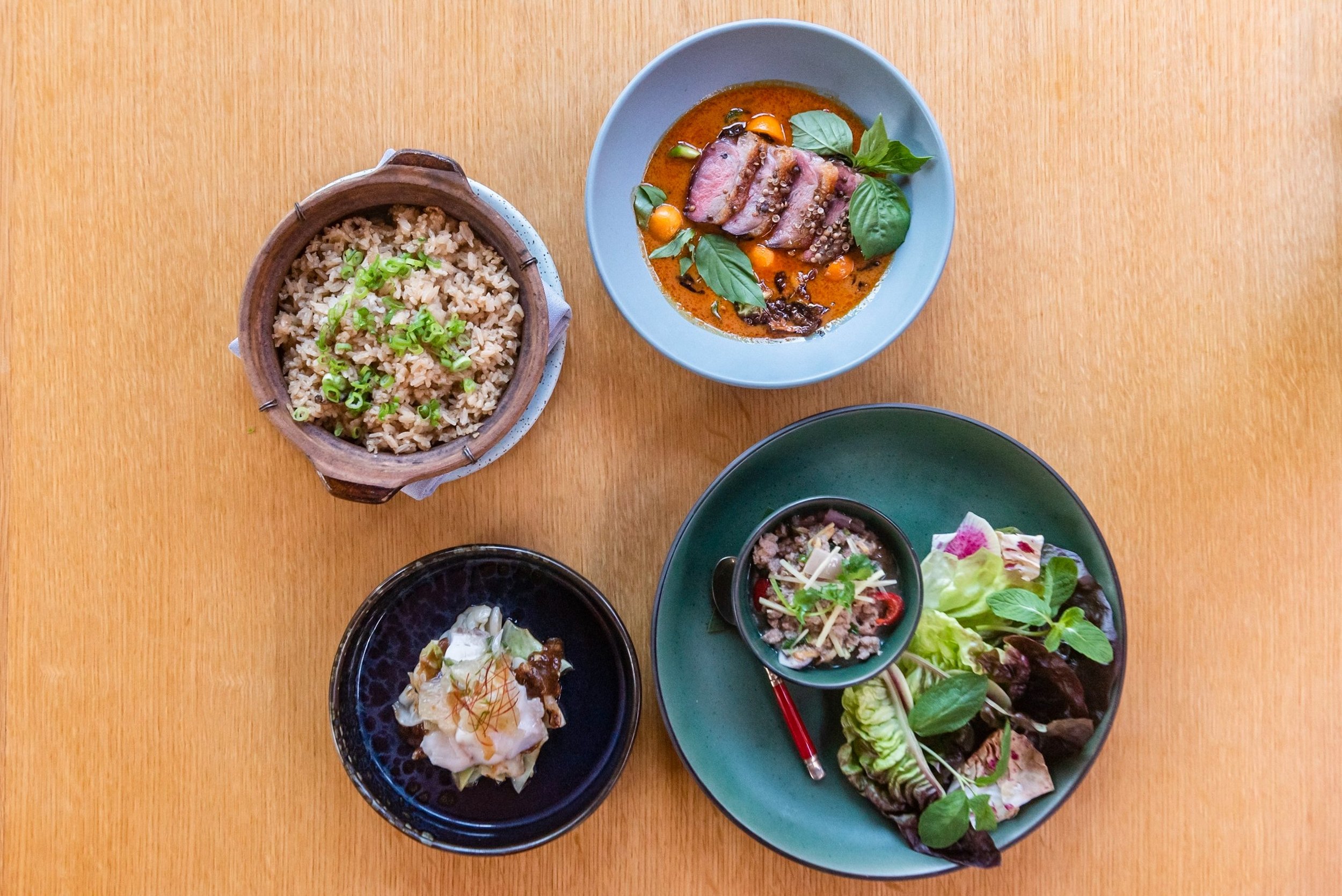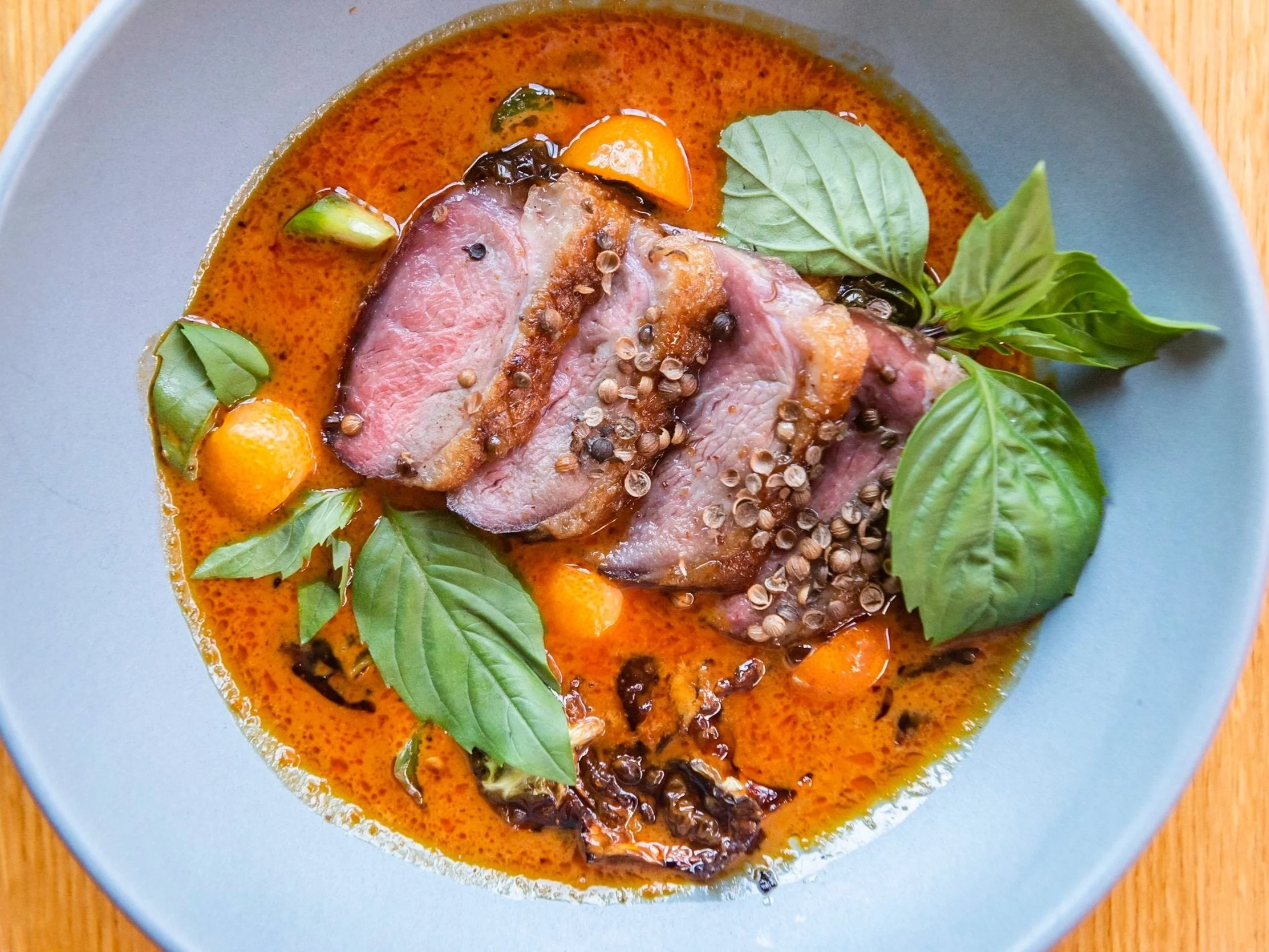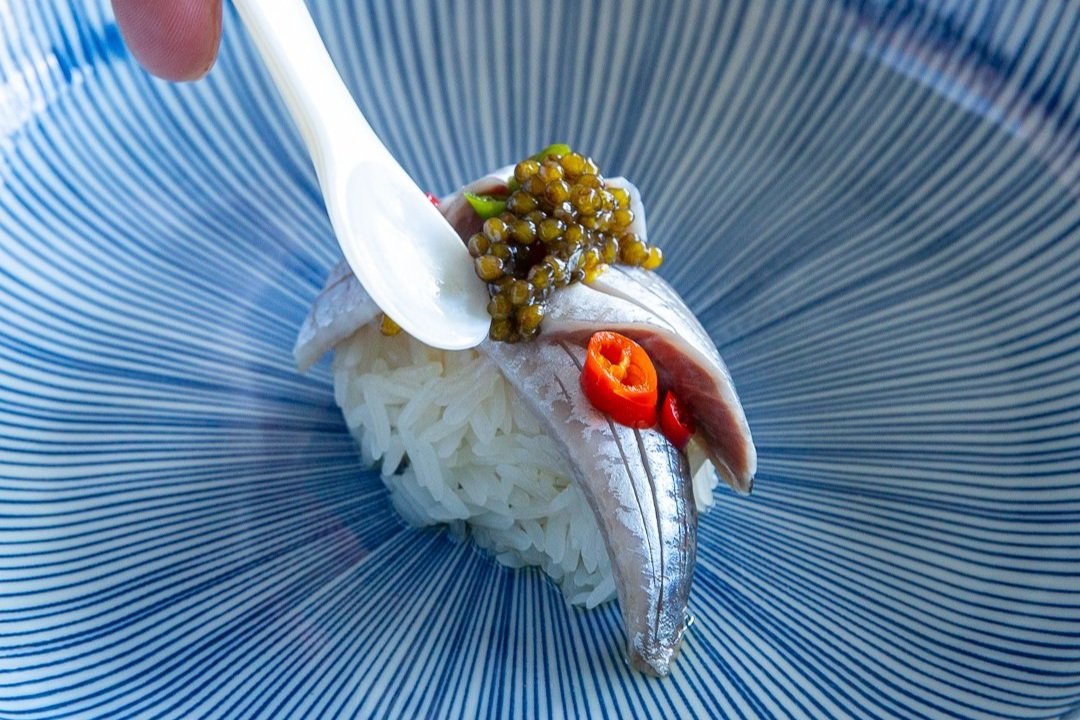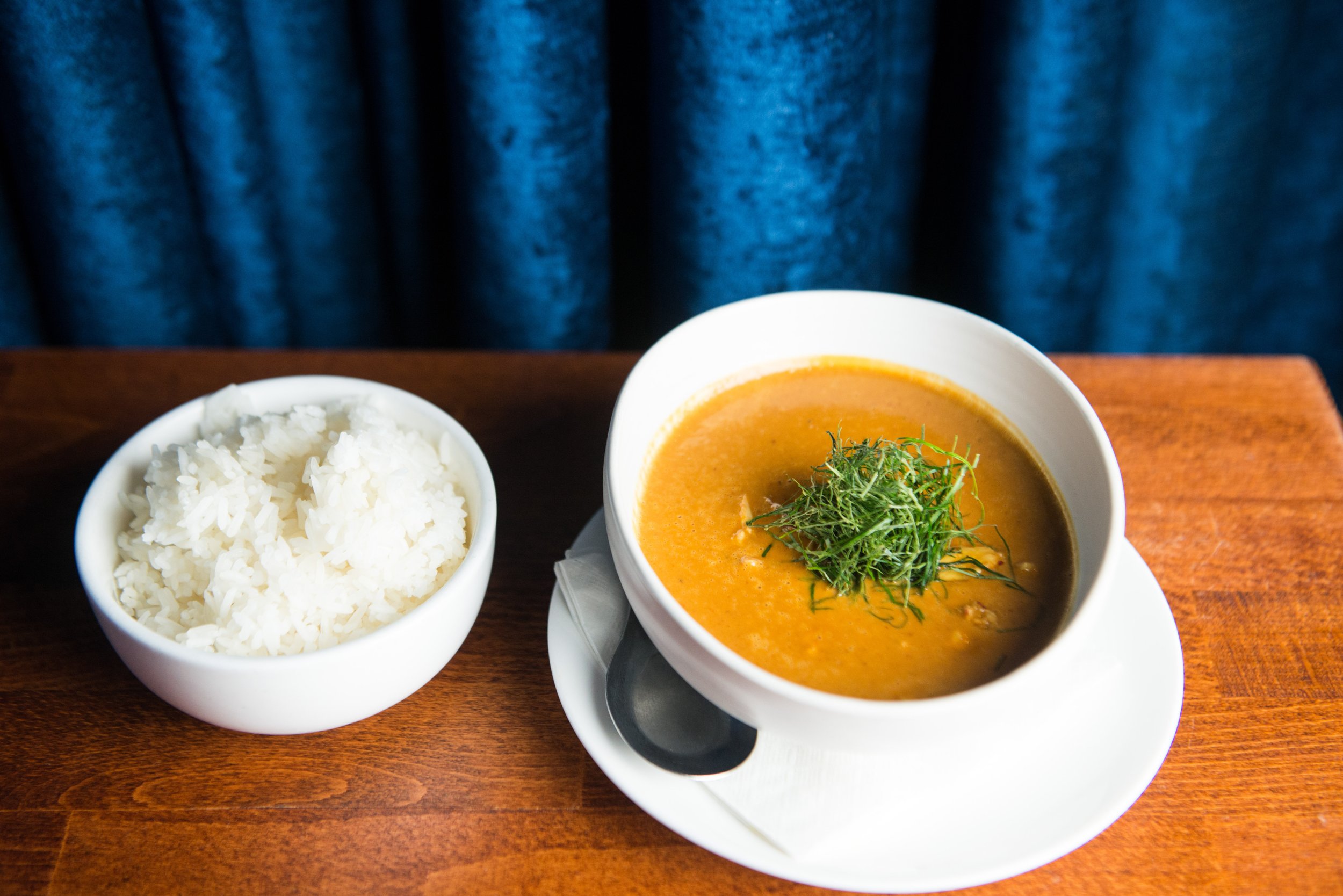Meet Me On Yaowarat Road
Chef Kitsanaruk Ketkuaviriyanont’s family-style spread takes diners on a trip through Bangkok’s Chinatown at Langbaan.
Langbaan’s Gang Phed Ped Yang: Red Curry, Duck Breast, Fried Brussels Sprouts, Jalapeño, Kumquat, Thai Basil Steamed Rice, Dried Shiitake Mushrooms, Oyster Sauce, Fish Sauce, GarlicPlaa Nueng: Steamed Rockfish, Ginger, Lemongrass, Cabbage, PomeloLon Plaa Kem: Coconut, Ground Pork, Salted Mackerel, Ginger, Fresno Chile, Thai Chile
At Langbaan, the 32-seat tasting menu concept inside the Portland Thai staple Phuket Cafe, Chef Kitsanaruk Ketkuaviriyanont’s menu is always set on a theme or a region, and follows a pattern: a few snacks, soup, a crudo or salad, and a giant, family-style spread.
In the winter of 2023, Ketkuaviriyanont’s menu celebrated the flavors of Bangkok’s Yaowarat Road, which is the main business artery for the city’s Chinatown. This menu was personal to the chef: “My grandparents are from China. I started learning to make food with my grandma,” he says. “We used to go to Chinatown for Chinese New Year. We’d go and eat and learn the culture of Chinese-Thai people. So many ingredients, so much flavor.” Leaning on his masterful technique, powerful flavors, and local produce, Ketkuaviriyanont’s Chinatown-themed family meal could easily be eaten piece by piece, but by serving them together, each piece of the meal adds to the next. “I want to present the real Thai style of eating. We eat everything together. The communication between all of the dishes: salty, spicy, fresh, a bit stinky,” he says. “Every dish is complementary. When you add the other three dishes together, you get a new flavor. It’s amazing, and it’s different. They’re all great by themselves, but better when eaten together.”
For the Curry
The centerpiece of his family-style spread, Ketkuaviriyanont’s red curry with roasted duck, or Gaeng Phed Ped Yang, starts with a mortar and pestle. He makes a fragrant, freshly pounded paste of garlic, shallot, lemongrass, galangal, dry red chiles, and tomatoes. After it's been fried in a bit of oil until it’s smooth and homogenous, he adds coconut milk and seasons with palm sugar, fish sauce, tamarind juice, and orange juice. “In Chinatown, curries taste a little different,” he says. “They’re a bit sweeter. Normally, I’d use just tamarind juice, but the orange juice sweetens it up, and the fresh flavor works really well with the other dishes.” Topped with a rosey-pink seared duck breast glazed in honey and coriander seed, and finished with kumquats and Thai basil, Ketkuaviriyanont’s curry is a warm hug; an equally bright and decadent foundation for the meal.
Recipe: Gaeng Phed Ped Yang
For the Steamed Rockfish
Taking advantage of Oregon’s local bounty, the spread features freshly caught rockfish. Leaning on traditional Thai-style steamed fish with lime, Ketkuaviriyanont starts with a freshly pounded paste of garlic, cilantro root, and white pepper that he lightly fries. When that’s fragrant, he adds a fish stock made from rockfish bones, and seasons the liquid with oyster sauce, soy sauce, and black vinegar. Once the lean fish is aromatic and cooked through, Ketkuaviriyanont wok-fries cabbage with XO sauce and some of the broth, which he thickens with cornstarch. Doubling down on the citrus flavors in the curry, he tops the steamed fish with a light pomelo salad for added brightness and a touch of citrussy bitterness.
For the Lon Plaa Kem
Diving back into his bag of Chinese ingredients, Ketkuaviriyanont’s last side dish features salted mackerel. “This one is super simple, but with really authentic Thai and Chinese flavors,” he says. Taking deep-fried salted mackerel, he removes the bones and steeps them in coconut milk. After a pounded garlic and white pepper paste spends some time in the wok, he adds stir-fried ground pork, the salted mackerel, and coconut milk. The dish is finished with shallot and wild ginger, and is served with lettuce and herb wraps for a cool, refreshing, and pungent addition to the family meal.
For the Clay Pot Rice
“In Thailand, we eat almost everything with rice.” Using the Cantonese technique of making rice in a clay pot, Ketkuaviriyanont starts by pounding together ginger, cilantro root, and white pepper. He throws it into a hot clay pot with some oil until it goes from green to yellow, then toasts jasmine rice in the paste. Once it’s fragrant, he steams the rice with shiitake mushrooms, oyster sauce, soy sauce, and sugar. The rice cooks for 15 minutes until fluffy and aromatic. And while normal steamed rice would be a perfect complement to the rest of the meal, for Ketkuaviriyanont, “it’s about the texture. When you use the clay pot, the rice on the bottom gets a little crispy.”










